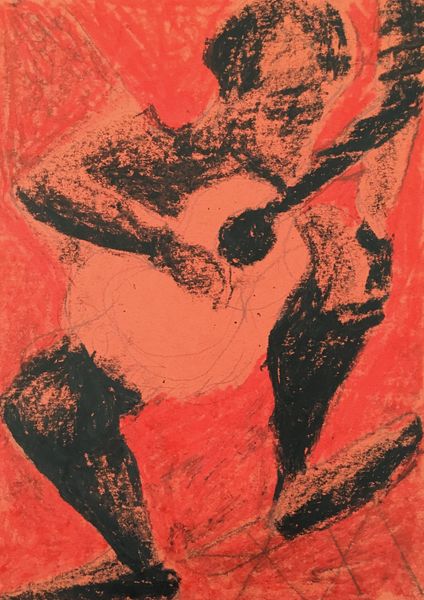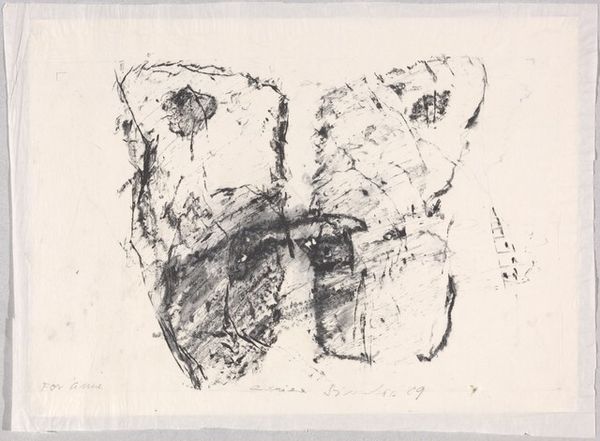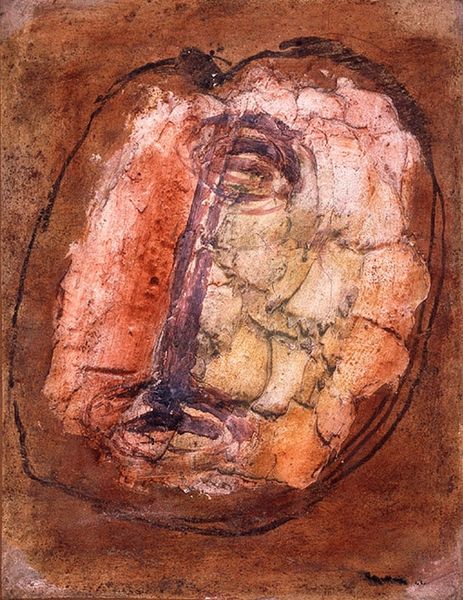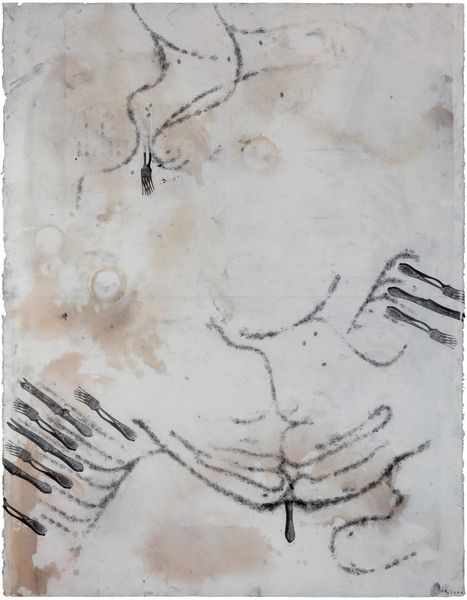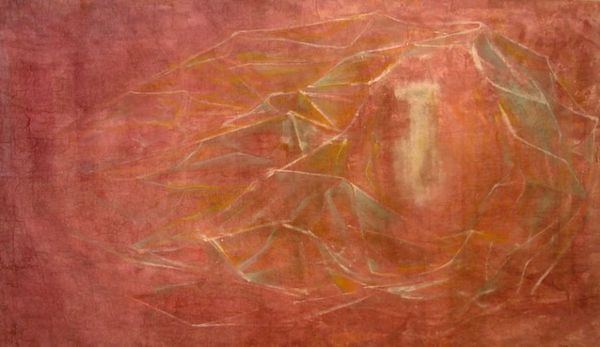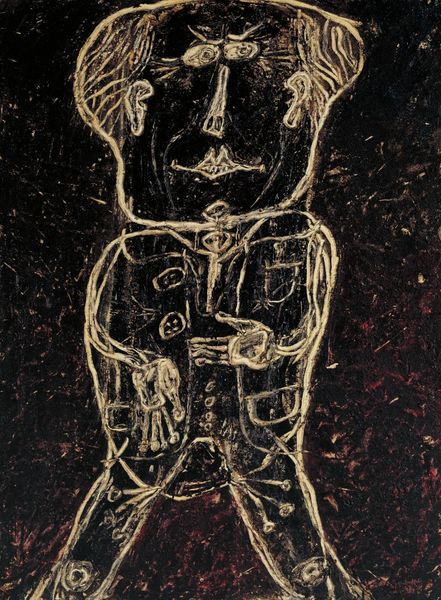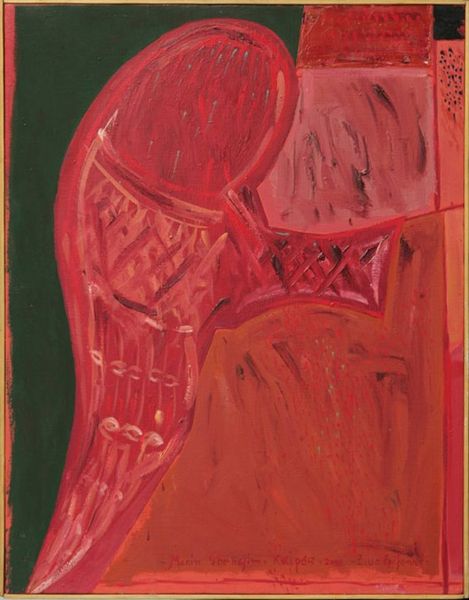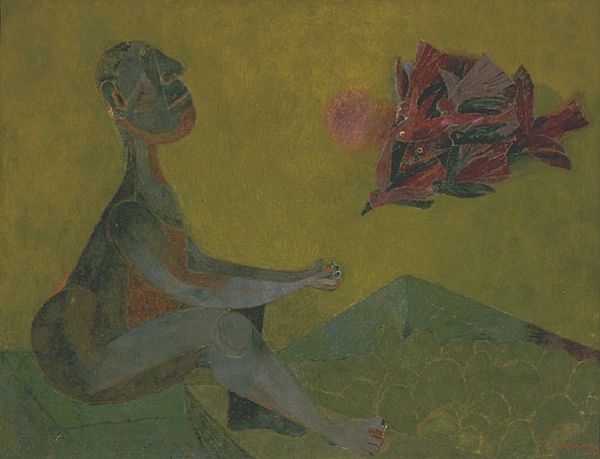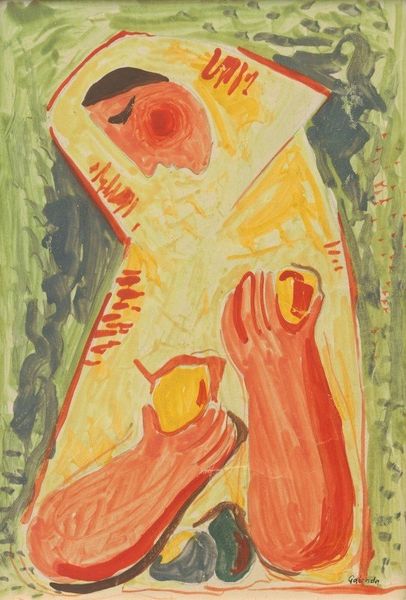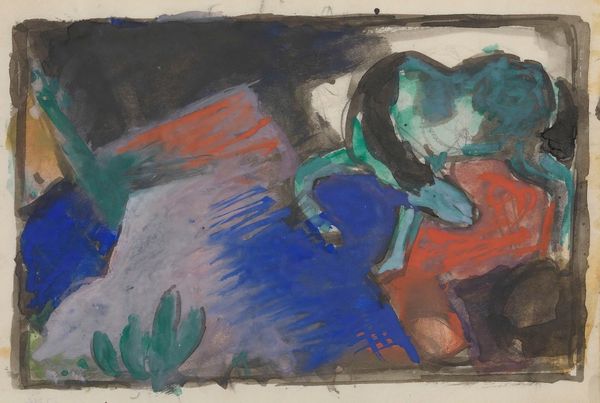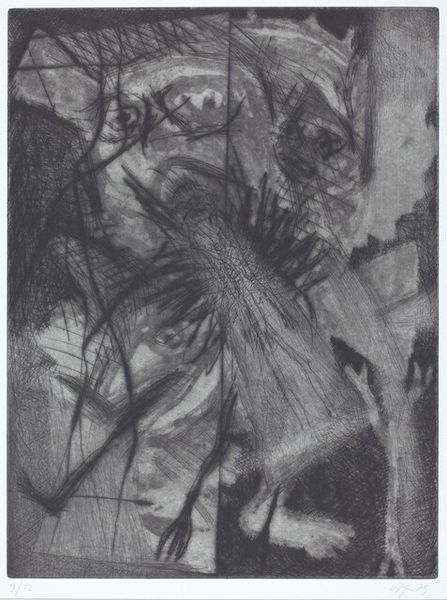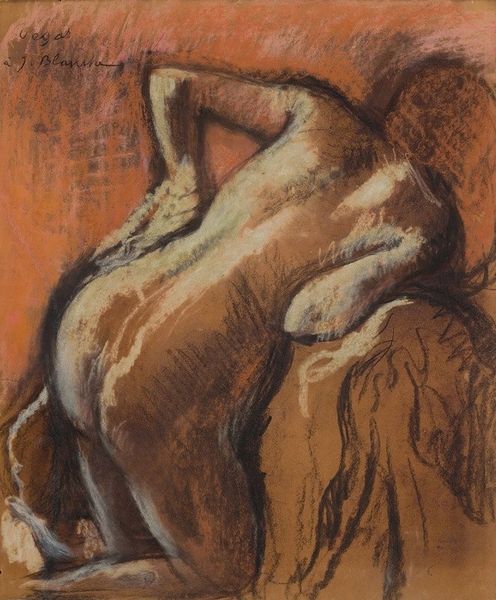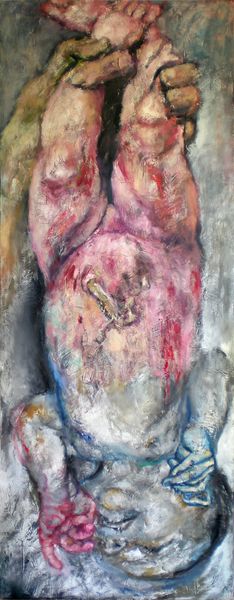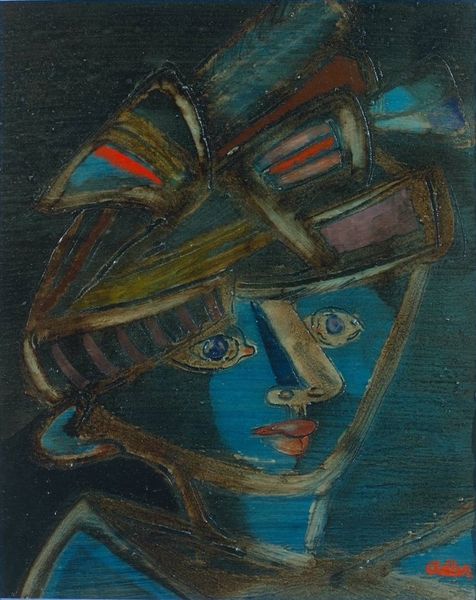
Dimensions: unconfirmed: 1638 x 1206 mm frame: 1915 x 1473 x 95 mm
Copyright: © Fondazione Lucio Fontana, Milan | CC-BY-NC-ND 4.0 DEED, Photo: Tate
Curator: Standing before us is Lucio Fontana's "Spatial Concept", held in the Tate collection, its dimensions roughly 163 by 120 centimeters. The earthy palette strikes me immediately. Editor: Yes, an immediate sense of rawness pervades. The dark reds and ochres, combined with the textured surface, feel almost primal, like something unearthed. What can you tell me about Fontana's process here? Curator: Fontana, as a sculptor who challenged the canvas, often worked with tactile manipulation. His Concetto Spaziale series explores how actions upon the canvas shift our understanding of painting and sculpture. Editor: Indeed. Consider the rough application of pigment, the scratching into the surface, and those looping lines. They create a dynamic tension between destruction and creation. Curator: Fontana's slashing and piercing were very much a commentary on the commodification of art. His gestures weren't just destructive, but challenged the very notion of art as a static object. Editor: A powerful subversion. The materiality, the very substance of the work, embodies that critique of labor and consumption, wouldn't you agree? Curator: Absolutely, reflecting Fontana's commitment to pushing beyond conventional artistic boundaries. Editor: Such a visceral work, it feels like a glimpse into the artist’s process, revealing both intention and struggle.
Comments
tate 6 months ago
⋮
http://www.tate.org.uk/art/artworks/fontana-spatial-concept-t00234
Join the conversation
Join millions of artists and users on Artera today and experience the ultimate creative platform.
tate 6 months ago
⋮
Fontana is best known for his claim to have introduced elements of time and space into art by slashing the canvas with a razor blade. He also explored other styles and in these and in many statements and manifestos he published Fontana strove to originate new forms of art appropriate to the modern scientific age. Although not slashed this canvas is perforated in places. It is one of the last and largest of a series of 'gessi' or chalks, made between 1954 and 1958. Fontana has written that it 'was painted in an attempt to develop the means of art so as to achieve a contemporary expression'. Gallery label, August 2004
